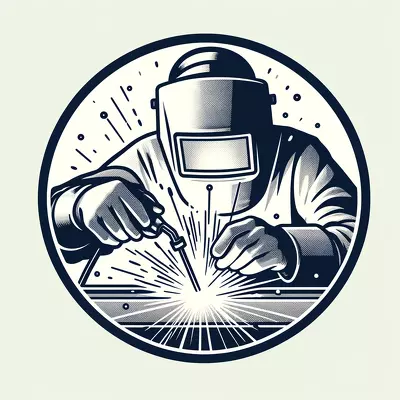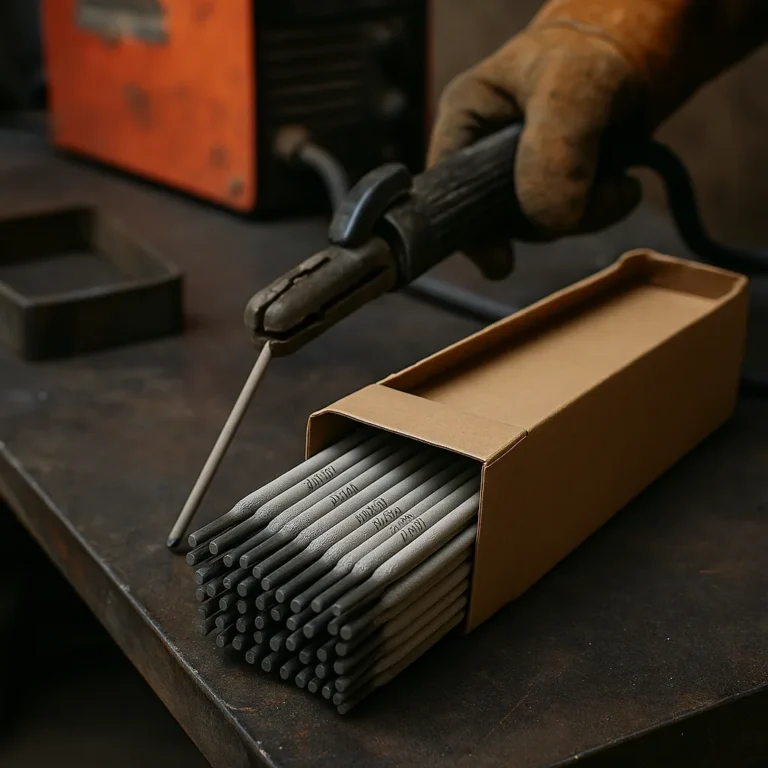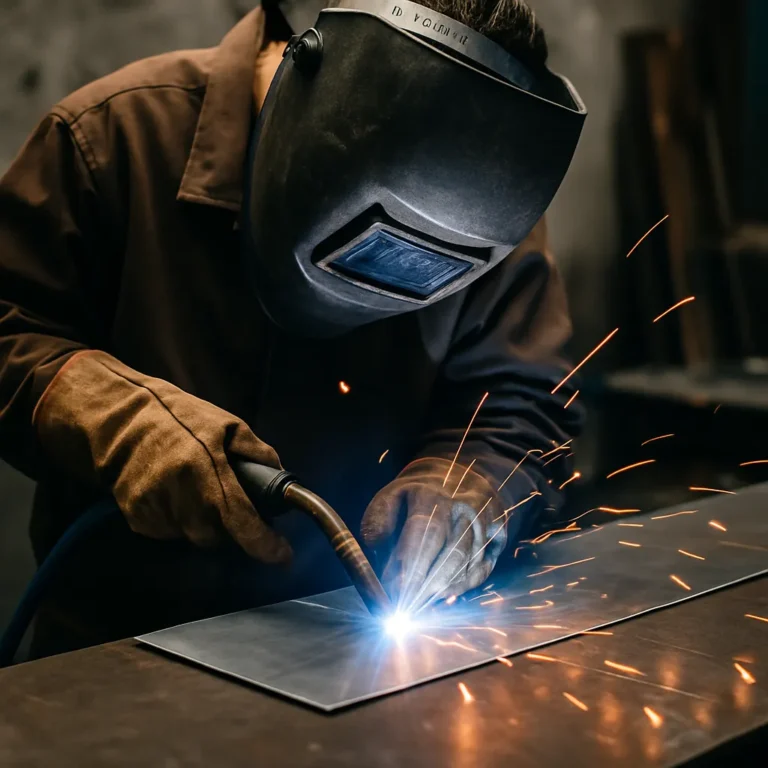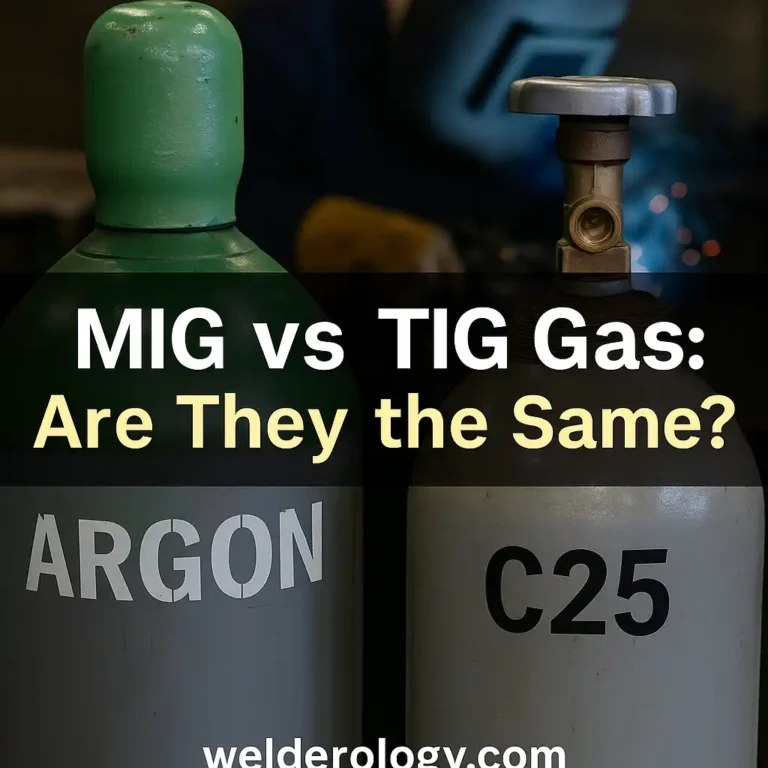What Is Welding: A Beginner’s Guide to How Metal Gets Joined

Disclosure: This post contains affiliate links. As an Amazon Associate, I earn from qualifying purchases—at no extra cost to you.
Welding joins two pieces of metal together by using heat, pressure, or both. It’s one of the most essential techniques in metalwork. From repairing a cracked lawnmower frame to building massive steel structures, welding makes it all possible and keeps industries running.
Here’s a clear look at what welding is, how it works, and where you’ll find it being used.
How Welding Works
Welding works by heating metal at the joint until it melts into a molten puddle. As the metal cools, the pieces fuse into a solid, permanent connection. In many cases, welders add filler metal to strengthen the joint or fill gaps.
Different methods generate heat in different ways. Electric arcs are the most common source, but some methods use gas flames, lasers, or even friction. Regardless of how it’s done, the goal stays the same: create a clean, strong bond that holds up under stress.
The Main Types of Welding Methods
Not every welding job calls for the same technique. Here are the methods most commonly used:
MIG Welding (Gas Metal Arc Welding)
MIG welding feeds a continuous wire while spraying shielding gas over the weld. This gas prevents contamination as the metal cools. MIG is one of the easiest methods to learn, making it popular for beginners working on car repairs or light fabrication.
TIG Welding (Gas Tungsten Arc Welding)
TIG welding uses a non-consumable tungsten electrode. The welder controls heat with a foot pedal while feeding filler metal by hand. TIG produces high-quality welds on thin metals like stainless steel and aluminum, though it takes more skill to master.
Stick Welding (Shielded Metal Arc Welding)
Stick welding uses rods coated in flux. As the rod melts, the flux creates a protective gas shield. This method doesn’t need a separate gas tank and works well outdoors or on dirty, rusty metal. It’s common on construction sites and for heavy-duty repairs.
Flux-Core Welding (Flux-Cored Arc Welding)
Flux-core welding is similar to MIG but uses a hollow wire filled with flux. This allows for welding outdoors without worrying about wind blowing shielding gas away. It’s a solid choice for farm repairs, outdoor projects, and general-purpose shop work.
Where Welding Is Used
Welding plays a role in nearly every major industry.
In automotive work, welding holds car frames together, repairs damaged panels, and builds custom exhaust systems. On construction sites, it’s used for steel beams, pipelines, and heavy equipment. The shipbuilding and aerospace industries rely on welding to create strong, lightweight structures that handle extreme conditions.
Welding even shows up in art and metal sculpture, allowing artists to bring creative designs to life. At home, it’s often used for repairing fences, fixing trailers, or building DIY projects right in the garage.
Is Welding Hard to Learn?
Welding may feel intimidating at first, but most people pick up the basics fairly quickly with proper guidance and practice. MIG welding is usually recommended for beginners because it’s simple to set up and forgiving to use.
TIG welding demands more control since you’re managing heat, filler, and positioning all at once. Still, with enough practice, even TIG becomes manageable. Like any skill, steady practice and good safety habits make a big difference. Wearing the right protective gear and learning correct techniques help make welding both safe and rewarding.
Common Welding Questions
Can I teach myself how to weld?
Yes. Many welders learn at home with online videos, practice, and the right safety gear. Start slow, stay safe, and practice regularly.
What’s the easiest welding type for beginners?
MIG welding is usually the easiest to start with. The setup is simple, and beginners often get good-looking results quickly.
Do I need a special outlet to run a welder?
Small 110V welders work with standard home outlets. Larger welders may require a 220V outlet, which often needs professional installation.
Can you weld rusty or dirty metal?
Stick welding handles dirty metal better than other methods. Still, it’s best to clean your workpieces for stronger, cleaner welds.
Is welding a good career choice?
Yes. Skilled welders are in demand across many industries. Welding offers strong pay, job security, and opportunities to specialize in high-paying fields.
Conclusion
Welding is a practical skill that opens doors to countless projects and careers. Whether you’re building, repairing, or creating, knowing how to weld lets you work with metal in ways few other skills can match. With the right gear, plenty of practice, and a focus on safety, anyone can learn the basics and start building real projects.






